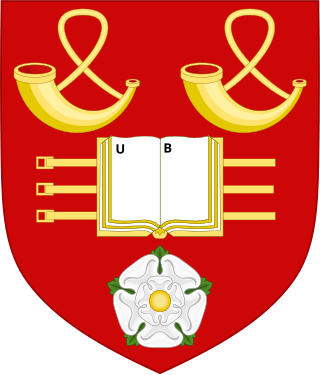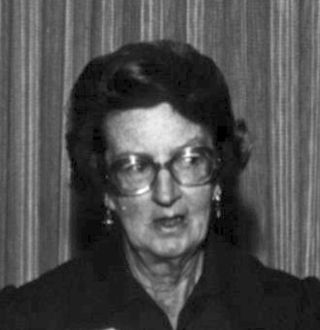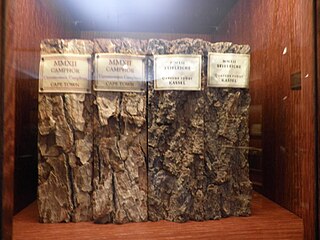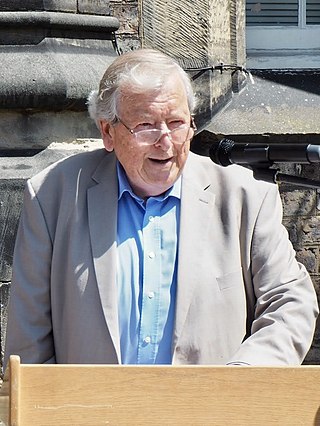
Time Team is a British television programme that originally aired on Channel 4 from 16 January 1994 to 7 September 2014. It returned in 2022 on online platforms YouTube and Patreon. Created by television producer Tim Taylor and presented by actor Tony Robinson, each episode featured a team of specialists carrying out an archaeological dig over a period of three days, with Robinson explaining the process in lay terms. The specialists changed throughout the programme's run, although it consistently included professional archaeologists such as Mick Aston, Carenza Lewis, Francis Pryor and Phil Harding. The sites excavated ranged in date from the Palaeolithic to the Second World War.

Robert Duane Ballard is an American retired Navy officer and a professor of oceanography at the University of Rhode Island who is noted for his work in underwater archaeology and marine geology. He is best known by the general public for the discoveries of the wrecks of the RMS Titanic in 1985, the battleship Bismarck in 1989, and the aircraft carrier USS Yorktown in 1998. He discovered the wreck of John F. Kennedy's PT-109 in 2002 and visited Biuku Gasa and Eroni Kumana, who saved its crew.

Philip Harding DL FSA is a British field archaeologist. He became a familiar face on the Channel 4 television series Time Team.

The Royal Astronomical Society (RAS) is a learned society and charity that encourages and promotes the study of astronomy, solar-system science, geophysics and closely related branches of science. Its headquarters are in Burlington House, on Piccadilly in London. The society has over 4,000 members, known as fellows, most of whom are professional researchers or postgraduate students. Around a quarter of Fellows live outside the UK.

The University of Bradford is a public research university located in the city of Bradford, West Yorkshire, England. A plate glass university, it received its royal charter in 1966, making it the 40th university to be created in Britain, but can trace its origins back to the establishment of the industrial West Yorkshire town's Mechanics Institute in 1832.

Mary Douglas Leakey, FBA was a British paleoanthropologist who discovered the first fossilised Proconsul skull, an extinct ape which is now believed to be ancestral to humans. She also discovered the robust Zinjanthropus skull at Olduvai Gorge in Tanzania, eastern Africa. For much of her career she worked with her husband, Louis Leakey, at Olduvai Gorge, where they uncovered fossils of ancient hominines and the earliest hominins, as well as the stone tools produced by the latter group. Mary Leakey developed a system for classifying the stone tools found at Olduvai. She discovered the Laetoli footprints, and at the Laetoli site she discovered hominin fossils that were more than 3.75 million years old.

Don Lynn Anderson was an American geophysicist who made significant contributions to the understanding of the origin, evolution, structure, and composition of Earth and other planets. An expert in numerous scientific disciplines, Anderson's work combined seismology, solid state physics, geochemistry and petrology to explain how the Earth works. Anderson was best known for his contributions to the understanding of the Earth's deep interior, and more recently, for the plate theory hypothesis that hotspots are the product of plate tectonics rather than narrow plumes emanating from the deep Earth. Anderson was Professor (Emeritus) of Geophysics in the Division of Geological and Planetary Sciences at the California Institute of Technology (Caltech). He received numerous awards from geophysical, geological and astronomical societies. In 1998 he was awarded the Crafoord Prize by the Royal Swedish Academy of Sciences along with Adam Dziewonski. Later that year, Anderson received the National Medal of Science. He held honorary doctorates from Rensselaer Polytechnic Institute and the University of Paris (Sorbonne), and served on numerous university advisory committees, including those at Harvard, Princeton, Yale, University of Chicago, Stanford, University of Paris, Purdue University, and Rice University. Anderson's wide-ranging research resulted in hundreds of published papers in the fields of planetary science, seismology, mineral physics, petrology, geochemistry, tectonics and the philosophy of science.
Sabba S. Ștefănescu was a Romanian geophysicist, professor of geophysics, member of the Romanian Academy. He was the cofounder, together with Liviu Constantinescu, of the Romanian school of geophysics.

Isca, variously specified as Isca Augusta or Isca Silurum, was the site of a Roman legionary fortress and settlement or vicus, the remains of which lie beneath parts of the present-day suburban town of Caerleon in the north of the city of Newport in South Wales. The site includes Caerleon Amphitheatre and is protected by Cadw.

Branodunum was an ancient Roman fort to the east of the modern English village of Brancaster in Norfolk. Its Roman name derives from the local Celtic language, and may mean "fort of the raven".

Mark Dion is an American conceptual artist best known for his use of scientific presentations in his installations. His work examines the manner in which prevalent ideologies and institutions influence our understanding of history, knowledge and the natural world. The job of the artist, according to him, is to "go against the grain of dominant culture, to challenge perception and convention". By locating the roots of environmental politics and public policy in the construction of knowledge about nature, Dion questions the objectivity and authoritative role of the scientific voice in contemporary society, tracking how pseudo-science, social agendas and ideology creep into public discourse and knowledge production. Some of his well known works include Neukom Vivarium (2006), a permanent outdoor installation and learning lab for the Olympic Sculpture Park in Seattle, Washington.
Christopher F. Gaffney is a British archaeological geophysicist and is Professor of Archaeological Science at the University of Bradford.
Dominic Powlesland, is a British landscape archaeologist based in North Yorkshire. He has contributed to the methodologies of field archaeology and landscape survey, particularly geophysics and the use of computers when recording and processing archaeological data. He is the director of the Landscape Research Centre and visiting professor at the universities of York, Leeds, Huddersfield and Vienna.
This is a list of Time Team episodes from series 20. The series was released on DVD in 2014.

Peter Vincent Addyman,, known as P. V. Addyman, is a British archaeologist, who was Director of the York Archaeological Trust from 1972 to 2002. Addyman obtained a degree in archaeology at Cambridge University, after which he lectured at Queen's University Belfast and the University of Southampton, while also conducting excavations. In 1972 he was offered the directorship of the newly founded York Archaeological Trust, the creation of which he had proposed; along with excavation work in York, he oversaw the development of the Jorvik Viking Centre, the Archaeological Resource Centre, and Barley Hall. In 2000 he was appointed a Commander of the Order of the British Empire.
David John Hickson was a British organizational theorist and Emeritus Professor of International Management and Organization at the Bradford University School of Management, known for his work in the field of organisational development (OD).

DigVentures is a social enterprise organising crowdfunded archaeological excavation experiences. It is registered with the Chartered Institute for Archaeologists (CIfA), and is a CIfA Accredited Field School.
Hannah Russ MCIfA is a British zooarchaeologist with a specialism in fish remains.

Derek Pitman is a British archaeologist, lecturer, presenter, and deputy head of the Department of Archaeology and Anthropology at Bournemouth University, specialised in ancient metallurgy and geophysical prospection.
Hugh Mannering Bibby is a New Zealand geophysicist. He holds the position of emeritus geophysicist at the New Zealand research institute GNS Science.













